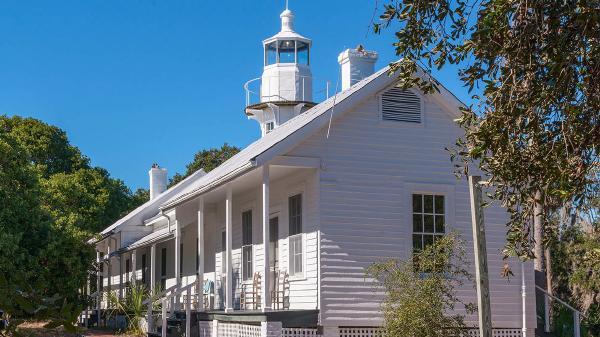Cedar Keys National Wildlife Refuge is composed of 13 islands along the coast of
the Gulf of Mexico near the
town of Cedar Key - Florida's oldest port. The refuge
was established in 1929 to protect native and migratory birds at a time when
their plumage was highly valued for ladies hats. Tens of thousands of egrets,
pelicans, herons, cormorants and roseate spoonbills nest in the Cedar Keys.

The only way to access Cedar Keys National
Wildlife Refuge is by boat. Our map navigation link will take you to the closest
public boat/kayak launch, which is in the
town of Cedar Key. Rental boats and
kayaks are available in town, along with a number of hotels, restaurants and
other activities. The
town of Cedar Key is a spectacular destination in its own
right, and well worth visiting.
Probably the most visited island in the Cedar Keys NWR is
Atsena Otie - a native
Muscogean phrase meaning "cedar island". There you will find beaches to walk, a
boardwalk across the marsh, an information kiosk, observation deck and
restrooms. In the 1800's, when this area was first settled by people other than
native Americans,
Atsena Otie Key was home to the village of Cedar Key - as
evidenced by preserved ruins and a historic cemetery that can still be visited
at that location.
Another popular island in Cedar Keys NWR is
Seahorse Key, home to the historic
Cedar Key Light Station, constructed in 1850. The lighthouse is owned by the
U.S. Fish and Wildlife Service, and is maintained by the University of Florida,
which uses it as the headquarters for its Seahorse Key Marine Laboratory. Public
access to the lighthouse is only available during open houses and special
events. The rest of
Seahorse key is open to the public except between March 1st
and June 30th, when the island is closed to protect nesting bords.
Activities & Facilities
Short hiking trails

Long hiking trails

Swimming

Open gulf kayaking

Motor boating

Fishing